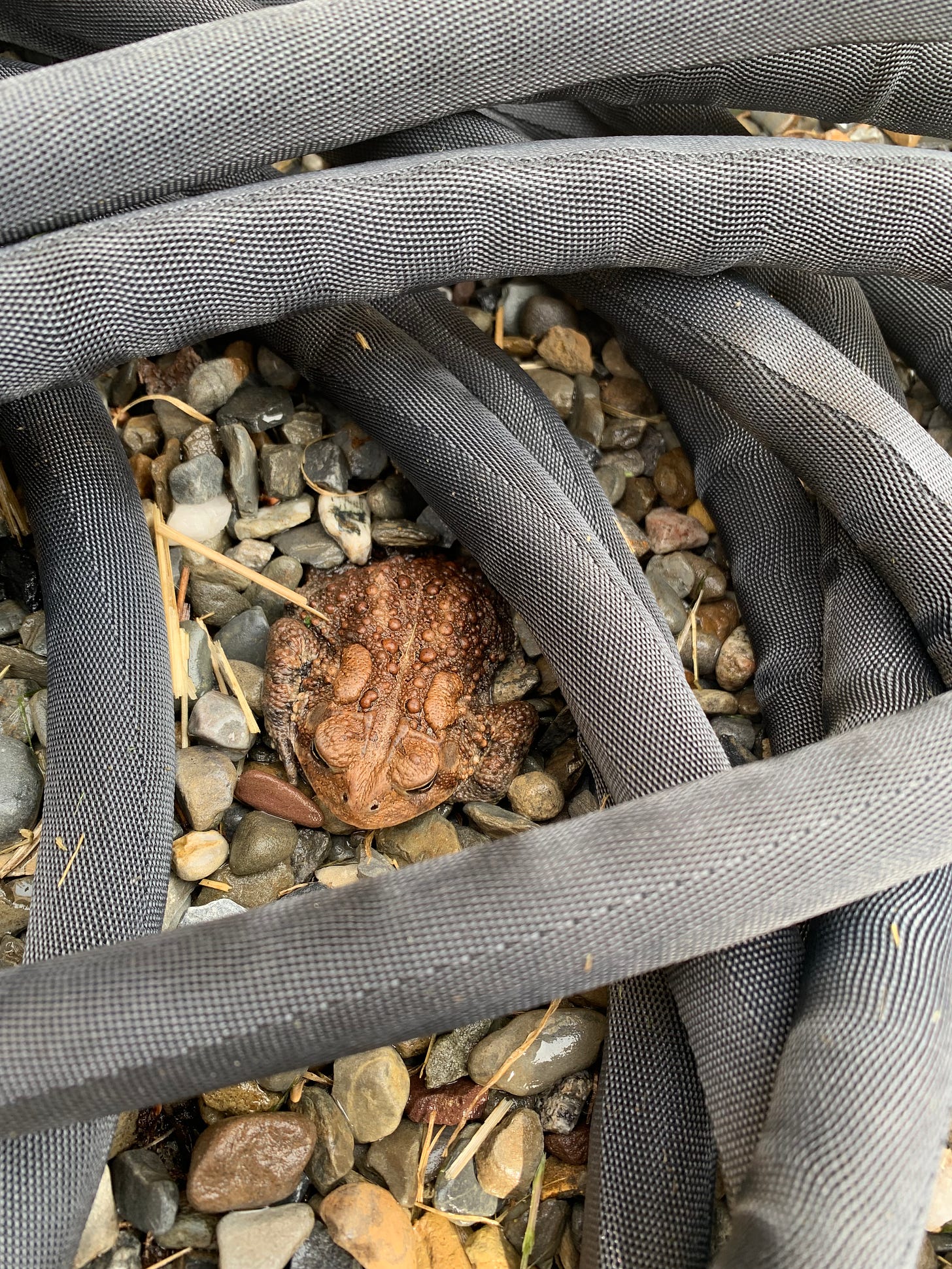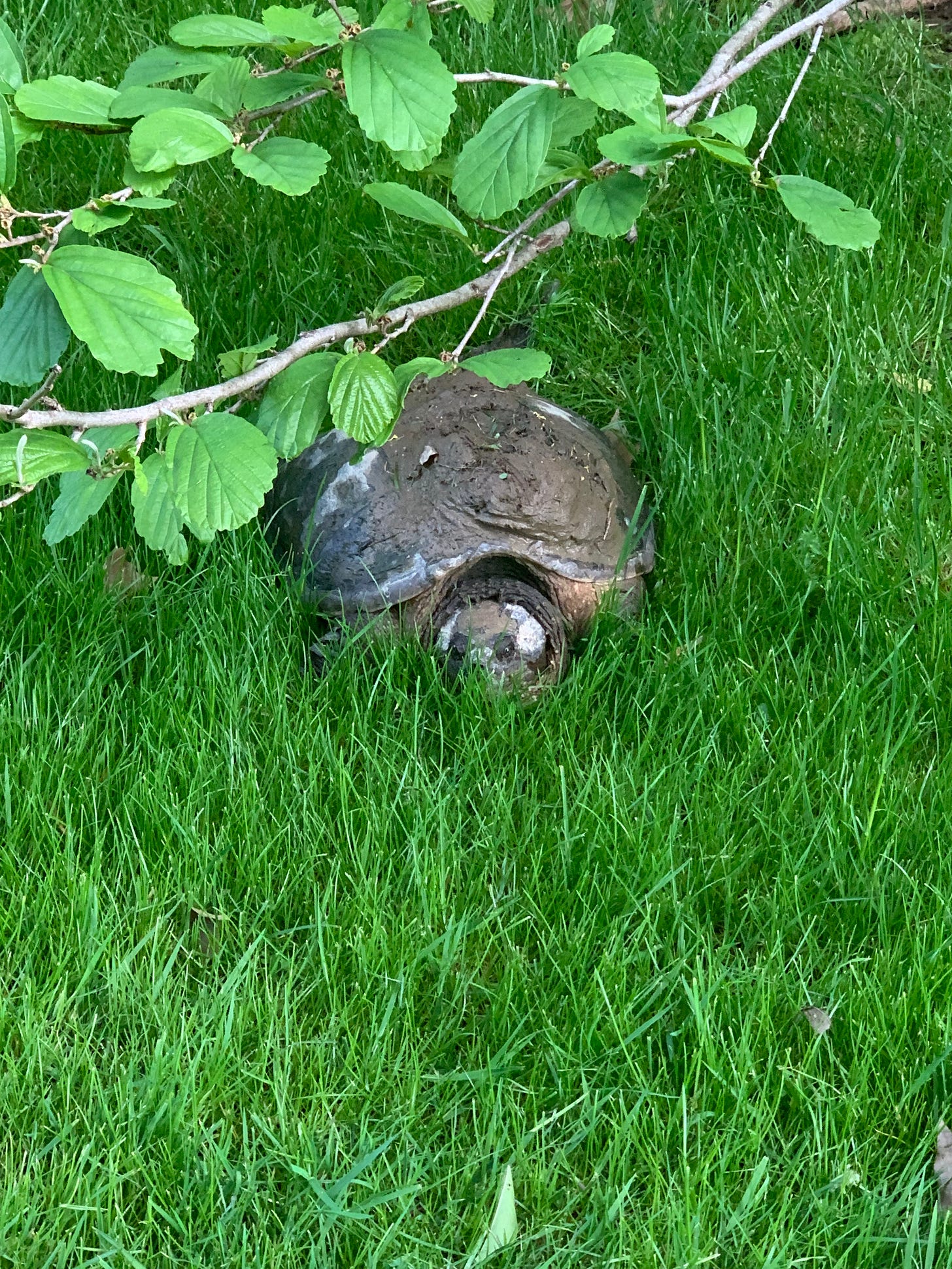Sometimes backyard stewardship requires us to consider the impacts our decisions have beyond our immediate environs and even beyond our region. The common soil amendment peat moss presents one such case.
As part of an extensive patio renovation, we recently built some raised beds in gravel for my wife, Pam, to grow vegetables and cut flowers. Here’s what they look like:
Nice, right? They’re western red cedar because we couldn’t get natural rot-resistant (that is, untreated) lumber closer to home. This source doesn’t have the light carbon footprint we would prefer, but at least we won’t be leaching flavor-of-the-day chemicals into our soil and asparagus.
I hasten to note that only about a third of the plants in these boxes will be native, so while I may at times seem to be promoting native plants with a level of enthusiasm that approaches religious fervor, my dedication to the proposition does allow for exceptions. My attitude is a bit like Saint Augustine’s famous ironic prayer, I guess: “Oh, Lord, make me chaste and celibate, but not yet.”
Anyhow, the planters are substantial and there are a dozen in all, raised two and a half feet off the ground. Filling them required nearly two dump truck loads of soil. After some research, Pam ordered a mix of 60% topsoil, 20% compost, and 10% organic potting soil. The driver who delivered the load said he’d only seen one other request for this formula, from Winterthur Garden in Wilmington, so at least we’re in good company.
No more than a few visitors have so far set eyes on these beds in real life, but one question I keep getting is whether we incorporated peat moss. The answer is an emphatic NO! While some do still debate the subject, I have come to the conclusion that the use of sphagnum peat moss is an old-school technique that should be relegated to the dustbin of gardening history.
Here are three reasons not to use peat in your garden (or pots):
Peat is probably not a sustainable resource. Most peat in North America comes from Canadian bogs (in Europe, the main producers are Finland, Ireland, and Sweden). While harvesters claim to scrape up only a small percentage of material each year, it took nature thousands of years to build these peatlands, and the accumulation of decomposing moss replenishes at a rate of just one millimeter per year.
Peat bogs store carbon. Although peatlands cover only 3% of the planet, they are our “largest natural terrestrial carbon store,” according to International Union for Conservation of Nature, and damage to them accounts for “almost 5% of global anthropogenic CO2 emissions.”
Peat ecosystems are fragile. While modern peat harvesting in Canada and Europe does require regulated restoration efforts after the fact, current techniques likely lead to less complex natural communities and still may negatively impact the watersheds of which they are a part.
In graduate school, I took a class on lifecycle assessment (LCA) that opened my eyes to how much modern life depends upon things that come out of the ground. Look around the room you’re sitting in. The wood, of course, grew from the soil. The drywall is mostly gypsum (calcium sulfate hydrate), a mineral dug from the ground. Your window panes contain multiple minerals. Any metals in your home came from mined ores. The fabric of your carpets and furniture probably contain synthetic fibers made from fossil fuels (they may even be 100% synthetic).
Similarly, though it involves less digging than the examples above, the harvesting of peat moss is sometimes referred to as “mining.” That should tell you something.
It can be hard to decide offhandedly whether one item you use in your garden is better or worse for the environment than another. Does the metal rake have less environmental footprint than the plastic one? Don’t be so sure!
But we do know there are excellent substitutes for peat moss that don’t require disrupting 10,000-year-old ecosystems. An article in Natural Life Magazine discusses several options from spent mushroom compost (especially popular in my area) to coir, a renewable product that derives from coconut fibers. The article also has a more in-depth description and analysis of the problem with using peat moss in the first place.
Stewardship doesn’t end at the garden wall. We can all be more conscious consumers as we build our own backyard paradise.
I got a couple of critters to pose for me this week. First, there was this American toad hiding in our coiled garden hose:
Then, just today, our property manager, Larry, noticed a giant snapping turtle in the big pond. I didn’t get a picture of that, but the guys pointed out this smaller one (I’d say the carapace is about 18 inches long), covered in mud, who probably came ashore to lay her eggs:






Love the soil recipe!